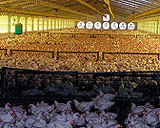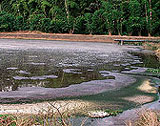In contract by the International Finance Corporation (IFC), a subsidiary of the World Bank, Fraunhofer IGB assisted the major producer of poultry and pork products in Ecuador in optimizing its wastewater and waste management regime at selected production sites.
The company operates a total of 95 production sites, which are distributed over wide areas of the country. Following new environmental legislation, industry in Ecuador has until 2008 to ensure that wastewaters from industrial production, before being discharged into surface water bodies, comply with limits which meet international standards. There are similarly stringent requirements affecting the disposal of solid waste. Unlike Western Europe, however, Ecuador largely lacks a public wastewater infrastructure. Enterprises are therefore, basically, direct dischargers.
 Fraunhofer Institute for Interfacial Engineering and Biotechnology IGB
Fraunhofer Institute for Interfacial Engineering and Biotechnology IGB
